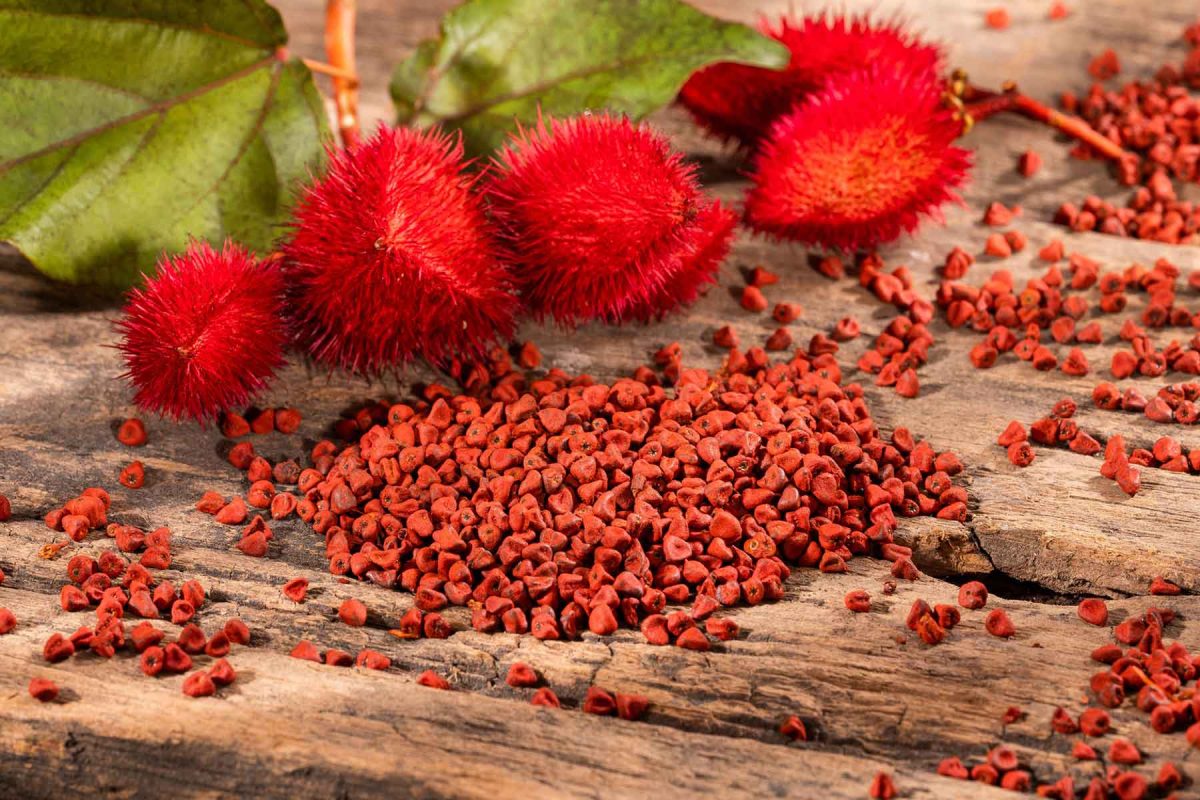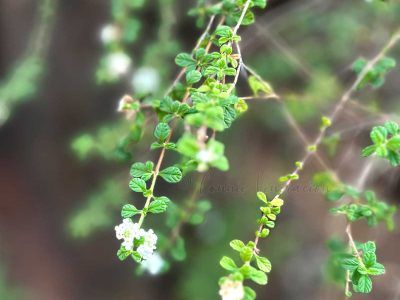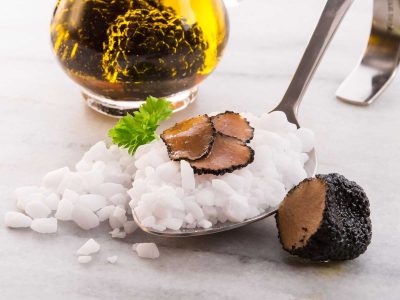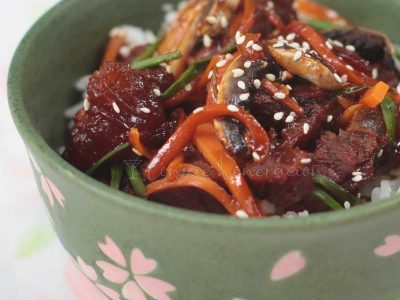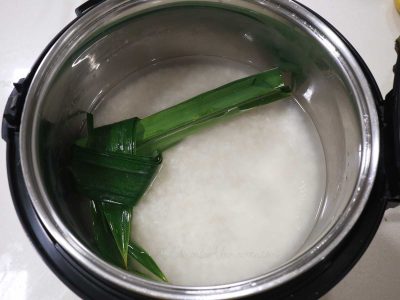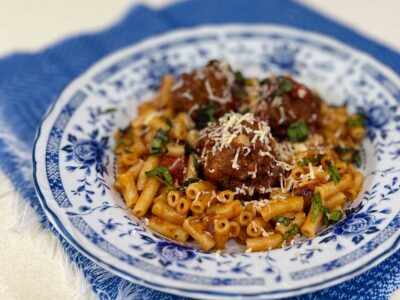Although annatto has a distinct, but mild, flavor and aroma, it is not really used as a spice but mostly as food coloring. The seeds of the annatto don’t come ready-to-use from the plant. This is not a case of plucking the seeds and throwing them directly into the pot.
Annatto plant
The mature annatto plant is eight to ten feet high on the average. Despite its height, some classify it as a bush rather than a tree.
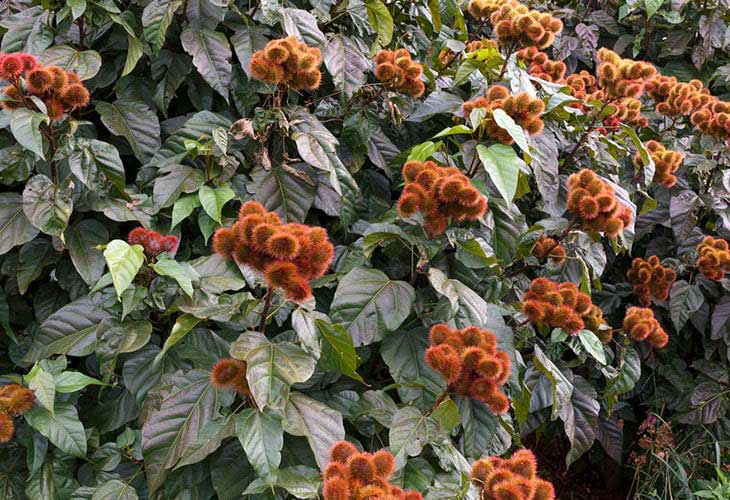 What’s the difference between a bush and a tree anyway? Some say the presence of a main vertical woody trunk makes a plant a tree while having several small ones makes the plant a bush. Others say it’s the height. A plant biologist claims that both standards are not accurate (it’s an interesting read).
What’s the difference between a bush and a tree anyway? Some say the presence of a main vertical woody trunk makes a plant a tree while having several small ones makes the plant a bush. Others say it’s the height. A plant biologist claims that both standards are not accurate (it’s an interesting read).
I’ve always considered the annatto a tree. My grandmother grew annatto behind her house and they always looked like trees to me. She had about three at any given time.
Annatto seeds
The seeds of the annatto are enclosed in pods which are green when immature and reddish when mature and ready for harvest. The pod, which can be easily opened by hand, contains 40 to 60 seeds.
When I was in my early teens, I remember that when it was time to harvest, an uncle and a handyman took charge of the job and their hands would turn red as they opened pod after pod to take out the prized seeds. I don’t remember anyone using the pulpy seeds fresh. They were left to dry before being stored in jars.
Despite the redness of the seeds, the resulting color of the food to which annatto seeds or their extract have been added is actually yellow to yellow-orange.
Where did annatto come from?
Latin America. Some say Brazil to be more specific. Annatto was grown in Latin American countries long before the Europeans colonized them. When annatto was first grown, it wasn’t for food. In ancient times, annatto was used as body paint — on warriors to protect them in battle and on religious personages for ceremonial and ritualistic purposes.
How annatto became a cooking ingredient
When annatto transitioned from a non-food dye to cooking ingredient seems to coincide with the arrival of the Europeans in America. The colonizers, long used to using saffron to tint their food, could find none in the new colonies. Annatto became a substitute and, hence, the reference to annatto as “the poor man’s saffron”.
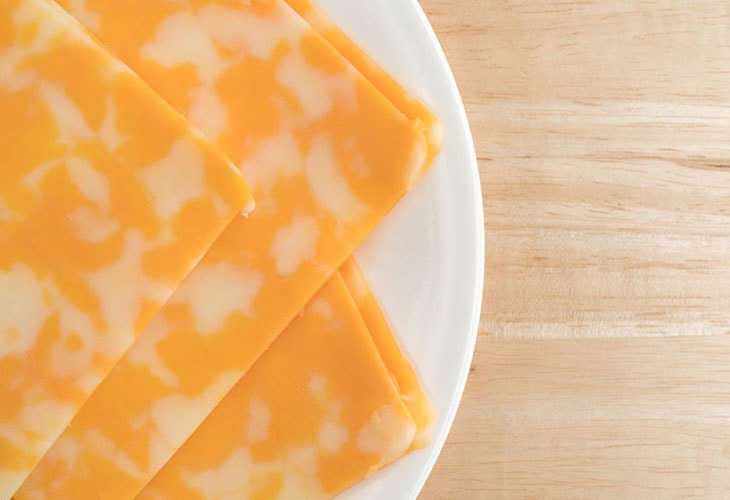 Annatto was brought from the colonies to Europe where it figured prominently in a huge cheese fraud. Yes, fraud. A huge marketing fraud. According to a story, naturally reddish cheese was a mark of superior quality as having been produced from the milk of grass-fed cows that ingested more beta carotene in their diet. It is, of course, a lie. But it’s a practice that persists to this day.
Annatto was brought from the colonies to Europe where it figured prominently in a huge cheese fraud. Yes, fraud. A huge marketing fraud. According to a story, naturally reddish cheese was a mark of superior quality as having been produced from the milk of grass-fed cows that ingested more beta carotene in their diet. It is, of course, a lie. But it’s a practice that persists to this day.
Cheese expert Paul Kindstedt of the University of Vermont explains that back in the 17th century, many English cheesemakers realized that they could make more money if they skimmed off the cream — to sell it separately or make butter from it.
But in doing so, most of the color was lost, since the natural orange pigment is carried in the fatty cream…
They began adding coloring from saffron, marigold, carrot juice and later, annatto, which comes from the seeds of a tropical plant.
Sorry Ireland: ‘Red Cheddar’ doesn’t really exist
Annatto in modern-day cooking
Today, as a cooking ingredient, annatto is sold in three forms:
- Compressed paste
- Powder
- Dried seeds
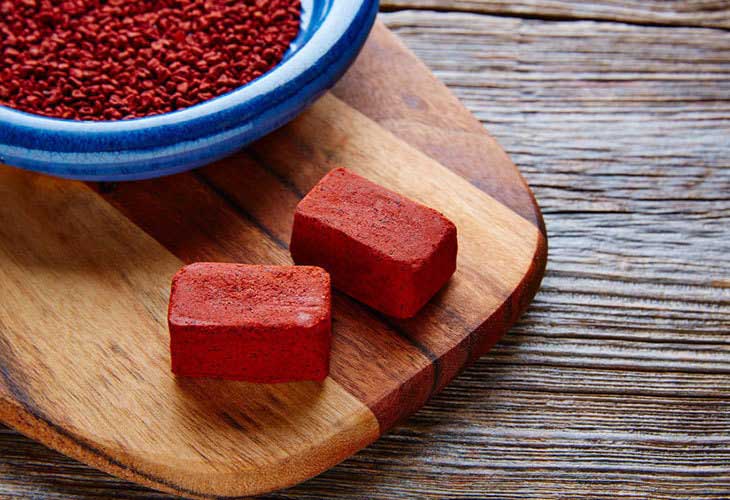 To use the paste, take a portion and mix with water to make it spreadable. Use to spread on fish or meat before grilling or simply add to the sauce of stews.
To use the paste, take a portion and mix with water to make it spreadable. Use to spread on fish or meat before grilling or simply add to the sauce of stews.
Powdered annatto can be sprinkled directly on food. When making a dry rub, for instance, just add annatto powder to the rest of the ground spices to give food a golden red color. It can also be sauteed with aromatics or sprinkled in soups and sauces.
And the dried seeds? How are they used?
How to make annatto / achiote oil
The dried seeds are usually soaked in hot water until they render their color. The water is then used to add a reddish tinge to meat, broth, noodles or sauce. Personally, I prefer to “fry” them in oil over low temperature. They render more color that way. I just strain the oil before sautéing.
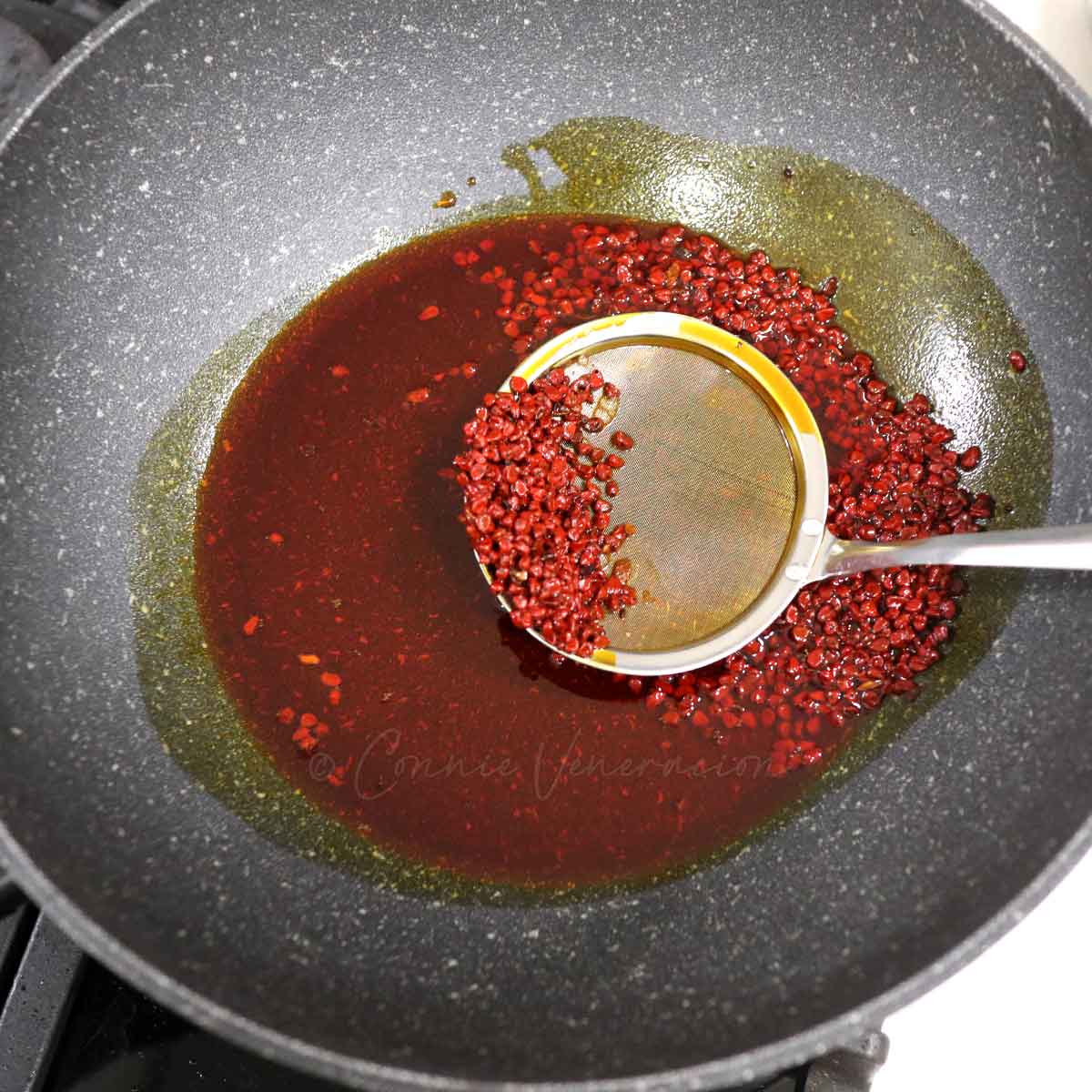 To make annatto / achiote oil, pour the amount of oil you need into a frying pan. Set the heat at the lowest temperature.
To make annatto / achiote oil, pour the amount of oil you need into a frying pan. Set the heat at the lowest temperature.
Add the annatto seeds making sure that they are spread evenly so that every bit touches the oil. Leave the seeds there for several minutes, stirring occasionally, until they have rendered their color into the oil.
Now, how to control the hue of the annatto / achiote oil. The less annatto seeds you use, the lighter the color of the oil. Yellowish. As you use more annatto seeds for the same amount of oil, the color deepens to yellow-orange to orange-yellow. Strain the oil before use.

